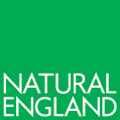LIFE WADER: project information note 1
Published 26 January 2022
Applies to England
LIFE WADER will improve the condition of the river, intertidal and marine habitats of the Northumberland Coast and Tweed catchment for the species that depend on them.
This 5-year project which started in October 2021 will focus on 4 important Special Areas of Conservation (SACs) and 2 Special Protection Areas (SPAs) extending along the Northumberland Coast to include the Tweed catchment in the Scottish borders. The area also incorporates Lindisfarne National Nature Reserve.
The project is led by Natural England, working with the Environment Agency, Tweed Forum, Newcastle University and Northumbrian Water.
Project aims and objectives
The LIFE WADER project aims to improve the ecological condition of more than 49,000 hectares of habitat and improve water quality. The project covers the river Tweed catchment, estuary and the Northumberland Coast. The project will be working with stakeholders including farmers and land managers.
The project will:
- deliver river restoration on the river Till at Harehope by creating new reed beds and delivering demonstration projects to address pollution from agriculture and other sources, reducing nutrient loads entering the marine environment
- plant trees and install fencing along river corridors to improve the riparian zone and reduce diffuse source of pollution
- sympathetically remove opportunistic macroalgae that is smothering intertidal habitats and identify a use for the removed material
- reduce disturbance of birds, mammals, and sensitive habitats by assessing site carrying capacity and identifying pressure points and enhancing visitor management through an increase in the use of seasonal wardens, interpretation, revised bylaws and the creation of wildlife refuges
- improve the control of invasive species through better surveillance, new surveying techniques, improved detection and subsequent removal across freshwater, marine and dune land habitats, using non-chemical controls
- demonstrate best practice to business, policy makers and land managers locally and across Europe
- increase awareness in visitors of the importance and sensitivity and vulnerability of sites and their designated features, such as the bird assemblages
- inspire the need for more sustainable management from different users, volunteers, stakeholders, businesses and communities
- improve the ecological condition of SACs and SPAs and increase their resistance and resilience to climate change impacts
Important issues affecting the area
Issues that are affecting the area include:
- elevated levels of nitrates and phosphates that negatively impact water quality, and affect fresh water, coastal and marine habitats
- excessive macroalgae growth smothers intertidal biotopes including seagrass, which impacts a variety of ecosystem services, such as providing food for internationally important wading and waterfowl birds
- growing recreational and visitor pressure, especially on the coast, is causing damage to habitats and disturbing sensitive bird species
- the arrival of new invasive alien species and persistence of established species threaten native species and sensitive habitats in riparian, coastal and marine areas
- low levels of awareness of the interconnectivity between the river, coastal and marine habitats hamper long-term conservation efforts
Contact: LIFEWADER@naturalengland.org.uk
Twitter: @Lifewader
LIFE WADER (LIFE20/NAT/UK/00277) has received funding from the LIFE Programme which is the European Union’s funding instrument for the environment. Funding is awarded for best practice, innovation and demonstration projects that contribute to the objectives of Natura 2000.
Natura 2000: The project includes 4 Special Conservation Areas and 2 Special Protection Areas which are part of Natura 2000- a network of the very best areas for wildlife across Europe. All Nature 2000 sites have special protection under European and UK laws.

